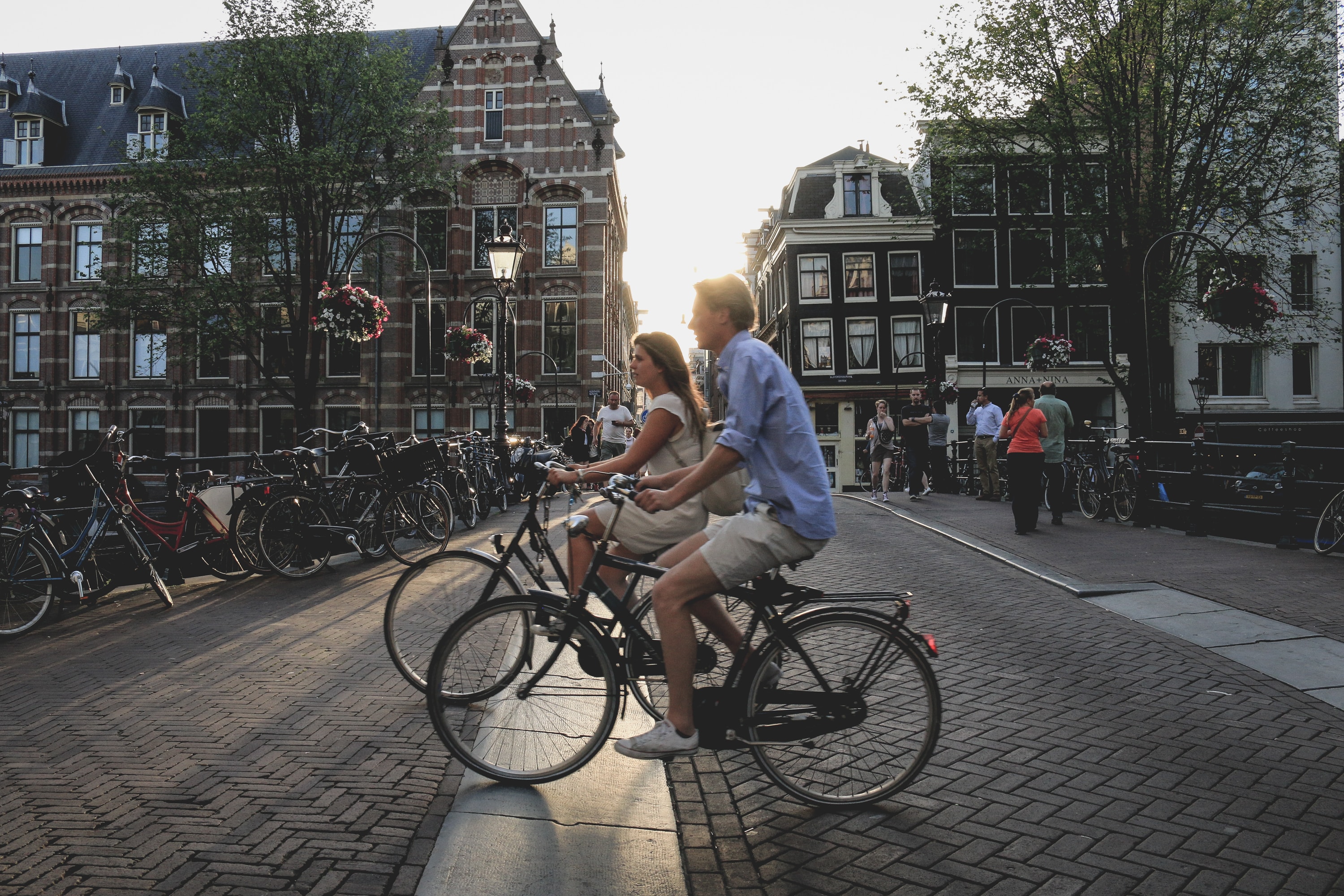
Spread the word of cycling; Be safe on your bike!
 This article was written by Arjen Klinkenberg, Project Officer at Fietsersbond (the Dutch Cyclists’ Union).
This article was written by Arjen Klinkenberg, Project Officer at Fietsersbond (the Dutch Cyclists’ Union).
At the end of August this year, Fietsersbond was happy to welcome a selection of Dutch experts on cycling safety for a workshop at our office in Utrecht. Why? To get their valuable contribution to our work on the SCAP Best Practice Guidelines, of course!
During the last three months, we have been working hard along with our partners, the European Cyclists’ Federation and Cyklistforbundet (the Danish Cyclists’ Federation), to put together a set of best practices from The Netherlands and Denmark to make cycling safer. The workshop in Utrecht focused on 4 themes that are further developed in the SCAP Best Practice Guidelines.
 First, Ernest van den Bemd, Manager of the Fietsschool (Cycling School), emphasized the importance of cycling as long into old age as possible. He thinks that in the coming years, the bicycle will grow into a form of medicine to combat disease in a simple yet effective way, surpassing the current understanding of cycling as merely a preventative measure to promote better health outcomes. The Cycling School takes the vulnerable cyclist on a journey towards comfortable and safe cycling, with very positive health consequences.
First, Ernest van den Bemd, Manager of the Fietsschool (Cycling School), emphasized the importance of cycling as long into old age as possible. He thinks that in the coming years, the bicycle will grow into a form of medicine to combat disease in a simple yet effective way, surpassing the current understanding of cycling as merely a preventative measure to promote better health outcomes. The Cycling School takes the vulnerable cyclist on a journey towards comfortable and safe cycling, with very positive health consequences.
Wim Bot, International Policy Advisor at Fietsersbond, talked about the three different bicycle networks envisaged in the Bike Vision 2040: Fietsersbond’s new ambitious agenda for Dutch Cycling. By 2040, the aim is for these bicycle networks to be developed in Dutch urban areas, each catering for the needs of different road users and leaving room for the most vulnerable cyclists, whilst enabling citizens and businesses to use the fastest and heaviest bicycle designs on the market. Crucially, says Wim Bot, the design of these different networks is an important way to increase safety and comfort in our cities.
Following a short break, Rico Andriesse, Mobility and Space Advisor at Goudappel Coffeng, shed light on the importance of bike streets and 30 km/h zones in the city. He indicated that the separation of different transport modalities often benefits safety and quality of life in the city.
Bike streets in the Netherlands planned in such a way that the cyclist is king.
Where used appropriately, they can be a great solution for improving road safety. However, it is important to make clear to users via the infrastructure design, the road signage and the ‘feel’ of the street, that these are spaces where active transport modes are in charge. Drivers of motor vehicles must be prompted to realise that, on the bicycle street, space is shared differently from the norm.
Lastly, the workshop featured a joint presentation from Martin de Vries, Chairman of the Speed Pedelec ‘Kopgroep’, and Tom Seising, Traffic and mobility advisor at Inter Contracting. Tom and Martin talked about the complexity and opportunities stemming from the Speed Pedelec (Electric bicycles that help you, if you can pedal fast enough, to reach speeds of up to 45 km/h). Can these bicycles replace commuting by car? Should they be allowed on a bike path? How can infrastructure be designed to incorporate new types of vehicles, like the Speed Pedelec? Various studies have shown that widening cycle paths can be a good option, and the design of the three cycle networks discussed previously by Wim Bot will certainly benefit the Speed Pedelec. Yet this remains a hot topic where discussion will undoubtedly continue in the coming years.
Our thanks to the experts who attended the workshop, you certainly provided many insights on how to make the SCAP Best Practice Guidelines as good as they can be!
News category:
Topics:
Contact the author
Recent news!
Upcoming events
Contact Us
Avenue des Arts, 7-8
Postal address: Rue de la Charité, 22
1210 Brussels, Belgium









